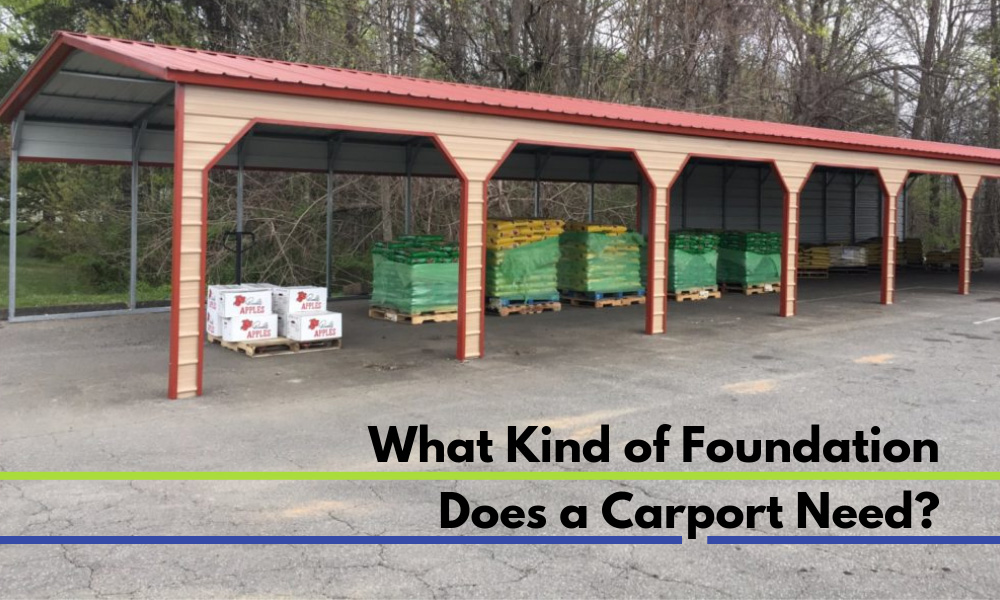
What Kind of Foundation Does a Carport Need?
Before we can tell you what kind of foundation a carport needs, there’s something to do no matter what base the carport will sit on. Before the crew shows up with the materials to install your new combo unit, RV cover, or triple wide carport, the ground must be level. It doesn’t matter if the carport will sit on concrete, stone, or mother earth, if the ground isn’t level, the carport won’t sit right. An uneven base for a carport can weaken the structure and leave it more susceptible to inclement weather.
Finding the right foundation for your carport depends on your budget, what you plan to put under the carport, and the property it will sit on. Some foundations materials are more durable than others, but that doesn’t make them better. You wouldn’t put down concrete if you plan to convert a metal, barn-style carport into an actual barn. Natural dirt would be best in that case. The situation will dictate what foundation is best. Below, we offer just a few possible foundations to use for your carport.
Concrete
Concrete is the most durable and dependable material for a foundation, but it’s also the most expensive. It will last much longer than any other material you might use, though. Putting down a concrete slab to support your carport will give it a solid base that will be strong in severe weather and won’t sway. Secure the carport directly to the concrete with heavy duty bolts and anchors. Concrete will also provide better protection to your car and raise it out of pooled water, while other materials may not.
Asphalt
Putting down asphalt is an option as well, but if you have a larger area to cover, you would need to put down a concrete base first. Asphalt is solid and secure like concrete, but it needs routine maintenance and sealing once a year. It’s as durable and dependable as concrete, and it will give the necessary support to your carport. Just like with concrete, attach the carport directly to the asphalt to keep it secure.
Gravel
Spreading stone is a more affordable option. One layer of stone is laid and tamped down, and then another layer is put on top to strengthen the pad and help delay any surface settling. Settling can cause holes and bumps in the surface. Gravel is a good option if you used the entire budget on the carport itself, too. One benefit of gravel is that you can put it down before you pour concrete on top, so if you already have gravel in place, concrete can be added later when you have more funds available. Drive anchors will secure the carport to the ground to keep it stable until you can anchor it onto a concrete slab.
